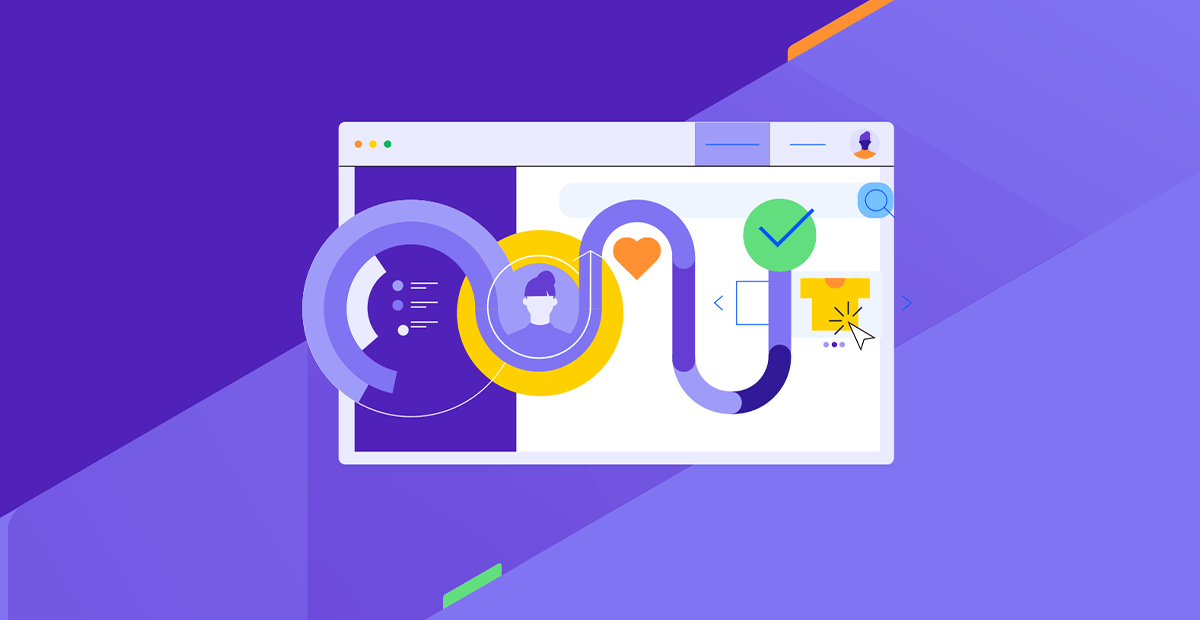Why 2024 Is the Year to Consider Migrating Your Digital Experience Stack to the Cloud

The time for the cloud is now. Keep your digital experiences delivering to customer expectations and be ready to scale.
As we near the middle of 2024, one thing is clear: the digital landscape is evolving at breakneck speed and businesses that fail to keep pace risk being left behind.
Customer expectations for seamless, personalized experiences across every touchpoint continue to soar, while the technologies and architectures underpinning those experiences are undergoing a profound shift.
At the center of this seismic shift is the mass migration of digital experience stacks to the cloud. Statistics show that 67% of enterprise infrastructure is now cloud-based with estimates that 175 zettabytes of stored data will be on the cloud by 2025.
From monolithic on-premises solutions to composable cloud-native platforms, organizations of all types are rethinking their approach to delivering digital experiences in pursuit of greater agility, scalability and innovation. If you haven’t yet charted your path to the cloud, 2024 is shaping up to be the year to take that leap.
The Tectonic Shifts Driving Cloud Adoption
So, what’s propelling this mass exodus to the cloud? A perfect storm of market forces and technological advancements:
Soaring customer expectations: Today’s customers demand nothing less than instant, intuitive, tailored experiences across an ever-expanding array of digital channels. Sluggish, disjointed, one-size-fits-all encounters simply won’t cut it. Many customers turn to cloud solutions because they don’t have time for service downtime.
Rapid innovation: Fueled by AI, machine learning, IoT and other emerging technologies, the pace of customer experience (CX) innovation is off the charts. Blink and you’ll miss the next big thing.
Need for speed and agility: In a market where change is the only constant, the ability to pivot on a dime is paramount. Monolithic architectures are giving way to modular, API-first approaches that enable lightning-fast adaptation.
Cost and resource pressures: With budgets tight and skilled talent scarce, doing more with less is the name of the game. The cloud’s economies of scale and on-demand resourcing are a fiscal force multiplier.
Security and compliance mandates: As data breaches proliferate and privacy regulations tighten, offloading security to trusted cloud partners is increasingly attractive, if not imperative.
Benefits of Modernizing Your DXP Stack
Against this backdrop, it’s no wonder that cloud migration has become a top priority for CIOs and digital leaders everywhere. But what specific benefits can you expect from modernizing your digital experience platform (DXP) stack? Let’s explore seven of the most compelling.
Accelerated Innovation
Perhaps the single greatest advantage of the cloud is its ability to accelerate innovation. By abstracting away underlying infrastructure complexities, the cloud frees your teams to focus on rapidly delivering value-added features and experiences. Lengthy hardware provisioning cycles and software update marathons give way to a continuous delivery model where new capabilities can be rolled out in real time.
This is especially true with cloud-native DXP architectures like the Sitefinity composable platform. By decomposing monolithic solutions into modular, API-driven microservices, a composable approach empowers you to quickly snap together best-of-breed components and adapt on the fly as needs change.
Elastic Scalability
Another hallmark of the cloud is its elastic scalability—the ability to instantly dial resources up or down to match fluctuating demand. For digital experience teams, this is a game-changer.
Imagine you’re an online retailer gearing up for Black Friday. With on-premises infrastructure, you’d typically have to provision enough capacity to handle those peak traffic spikes year-round, even though it sits idle most of the time. It’s a classic “hurry up and wait” scenario.
In the cloud, by contrast, you can effortlessly scale out to absorb surges when needed, then scale back in during lulls, paying only for what you use. No more overprovisioning “just in case.” No more scrambling when campaigns overperform. The cloud has your back.
But scalability isn’t just about infrastructure. With a composable cloud DXP, you can also easily extend your experience management capabilities by plugging in new SaaS modules as your needs evolve. Start with core content, then seamlessly add commerce, personalization, analytics, etc. as you grow. It’s a scalable foundation for your entire digital experience lifecycle.
Always-On Availability
In today’s 24/7 digital economy, even a moment of downtime can be catastrophic. Just ask any company that’s endured an ill-timed outage during a high-stakes product launch or flash sale. The reputational damage and revenue loss can be staggering.
With the cloud, you can kiss those nail-biting moments goodbye. Leading cloud providers like Amazon, Microsoft and Google guarantee uptime north of 99.9%—a level of resilience that would be cost-prohibitive to match on your own. Redundant architectures spanning multiple availability zones keep your experiences online and your data accessible, no matter what Mother Nature or Murphy’s Law throws your way.
For extra peace of mind, you can even design for multi-cloud deployments, distributing your workloads across multiple providers for added fault tolerance. So, whether it’s a server glitch or a natural disaster, your digital front door stays open for business.
Significant Cost Savings
While accelerated innovation and bulletproof reliability are certainly compelling, for many organizations the ultimate driver of cloud migration is cost savings. And it’s not hard to see why.
With on-premises solutions, you’re saddled with a slew of upfront and ongoing expenses:
- Hefty capital outlays for hardware and software licenses
- Pricey maintenance contracts and upgrade fees
- Dedicated facilities to house your kit
- Bloated energy and cooling bills
- Armies of admins to keep it all humming
It’s a sprawling total cost of ownership that can quickly eat you alive. The cloud, in contrast, converts these sunk capital expenditures (CapEx) costs to predictable operational expenditures (OpEx) costs. Instead of shelling out for depreciating assets, you simply pay as you go for what you use. And because cloud providers can harness massive economies of scale, those usage rates are often far below what you could achieve in-house.
But the savings extend beyond infrastructure. With a SaaS DXP model, you also offload the non-trivial costs of keeping your experience management tools on the cutting edge. Continuous updates and new features are simply part of the package rolled out by the vendor behind the scenes. No more costly and risky upgrades to dread.
All told, IDC estimates that cloud migrations deliver a five-year ROI of 316% on average. For experience-led organizations looking to do more with less, it’s a value prop that’s tough to top.
Ironclad Security and Compliance
Of course, all the savings in the world won’t matter if your move to the cloud compromises the security and integrity of your customer experiences. Fortunately, with a reputable cloud provider and a well-architected DXP, you can enhance your security posture compared to traditional on-premises setups.
The world’s leading hyperscale cloud platforms have invested billions in building ironclad defenses to better safeguard their customers’ workloads and data. From state-of-the-art physical security at their data centers to sophisticated AI-powered threat detection and response, these providers bring to bear security resources and expertise that few individual organizations can match.
Moreover, cloud providers employ dedicated teams of security professionals who work tirelessly to stay ahead of the latest threats and vulnerabilities. Automatic patching and upgrades help verify that your environments are protected against emerging exploits, without the need for constant firefighting. Additionally, these providers are well-versed in the intricacies of compliance for heavily regulated industries and regions, such as HIPAA for healthcare, SOC 2 for SaaS and GDPR for EU data subjects.
With a cloud-native DXP like that of Sitefinity, you can further bolster your security by leveraging the inherent protections of containerized microservices. By isolating individual experience components and their data, you can implement granular access controls and limit the blast radius of any breaches. Immutable infrastructure can also thwart would-be intruders. All this adds up to a security and compliance posture that lets you rest easier, knowing your customer experiences and data are in good hands.
Streamlined Developer Experience
Another key driver of cloud migration is the promise of a streamlined developer experience. In traditional on-premises environments, developers often spend an inordinate amount of time grappling with infrastructure plumbing and compatibility headaches, instead of focusing on delivering business value.
The cloud changes all that. With managed services and serverless computing, your developers can offload tedious infrastructure provisioning and scaling tasks to the platform, freeing them to focus on crafting exceptional experiences. Need to spin up a new testing environment or deploy an updated microservice? It’s just a few clicks (or API calls) away.
Future-Proofed Agility
Perhaps most important of all, migrating your digital experience stack to the cloud helps future-proof your business for whatever the next wave of disruption brings. In an era of volatility, uncertainty and relentless change, that existential agility is priceless.
With a composable cloud DXP as your foundation, you have the ultimate flexibility to adapt your technology strategy and remix your experience capabilities as the market evolves. New channels emerge? Plug in a new touchpoint module. New data regulations loom? Swap analytics providers. New partner integrates an essential service? Connect APIs and extend.
This plug-and-play agility means you’re never locked into a monolithic stack that might look dated 12 months from now. Future-proofing also means designing your DXP with openness and portability in mind: open APIs, open data models, open deployment targets. So even as your cloud strategy morphs—single cloud, multi-cloud, hybrid, edge—your experience architecture flexes with you.
Concluding Thoughts
Moving your digital experiences to the cloud isn’t something you want to rush into. It takes some real thought and a step-by-step approach. You’ll need to take a good hard look at your current setup—what resources you have, what reference architectures make sense and how much risk you’re willing to take on.
Bring in the experts—vendors, partners and others who’ve been there. Pick their brains on architectures, migration plans and hurdles they hit. With the right guidance and a solid game plan, your cloud journey will be a whole lot smoother.

